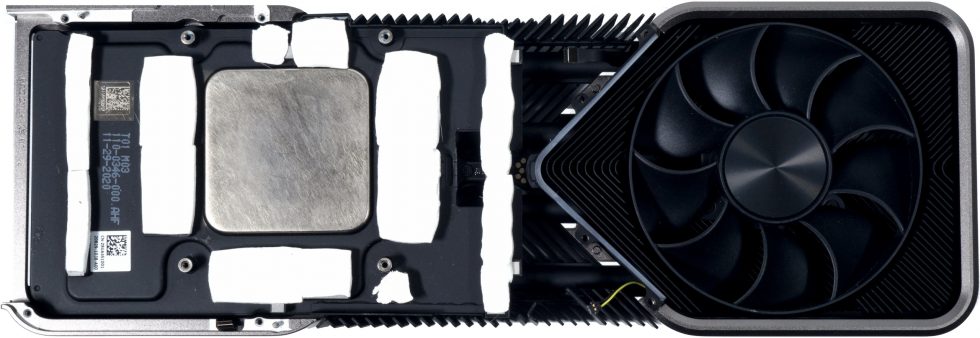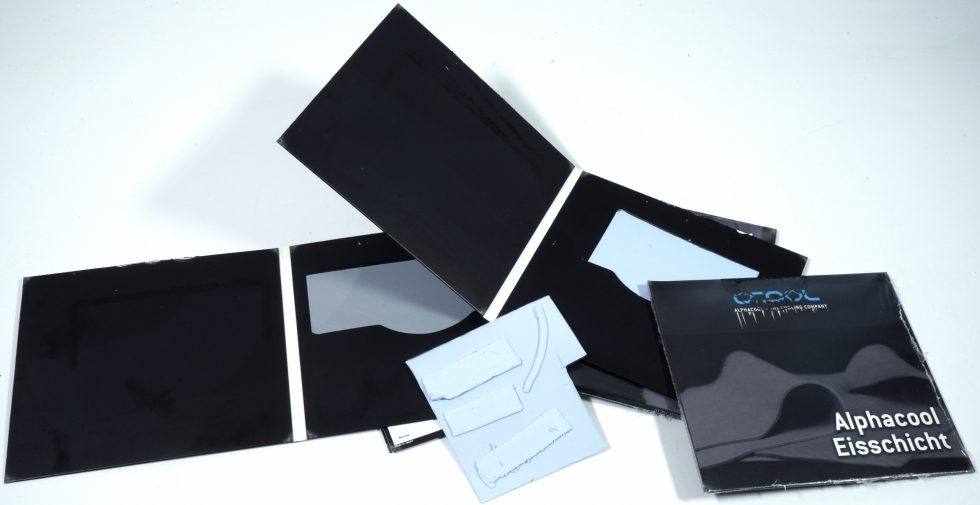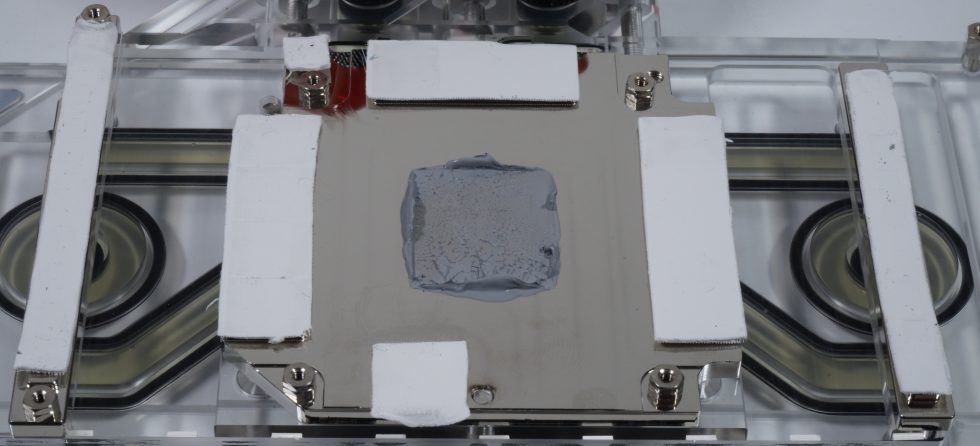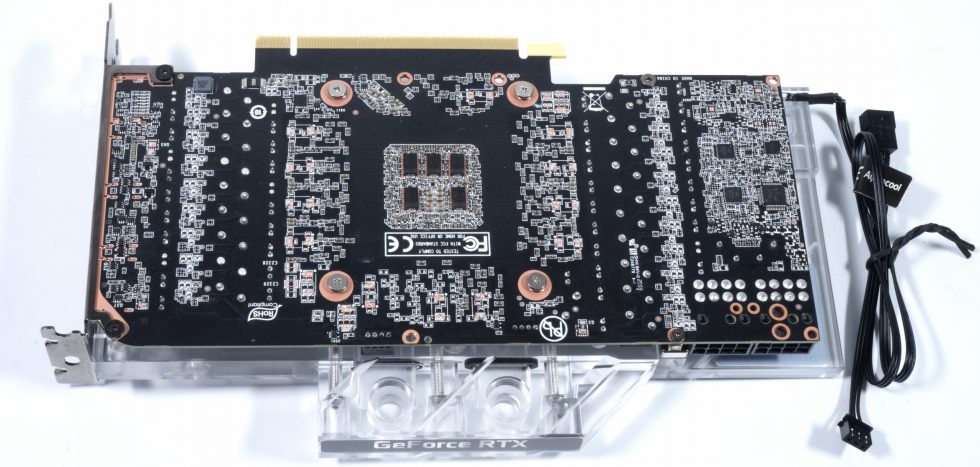Four performance classes : Which pads do we choose as a reference?
How do you actually want to check pads like that? The intention behind the test is a division into four performance classes, because it should be logical that a pad (100 x 100 x 1 mm) for less than 20 euros does not come close to one for 100 euros in the same size. However, the intermediate levels between the two extremes are also very interesting here, because often a little less equals significantly cheaper and is usually still completely sufficient for the intended purpose.
As a starting point, I use the exact pads that NVIDIA uses on the original GeForce RTX 3080 FE. I was able to trace the path of these soft and crumbly pads back to the manufacturer at the time, and I also use them for my tests as a comparative value in the lowest power class. Because if we’re being honest, it’s really not high-end, but it’s designed for durability and the softest consistency possible without silicone bleeding out here like so many ultra-soft pads.
| Performance class | Thermal conductivity | Test pattern |
| Entry level | < 5 W/(m*K) | Alphacool Ice Layer Ultra Soft 3 W/(m*K) |
| Middle Class | 5 to 8 W/(m*K) | Alphacool Rise Ultra Soft 7 W/(m*K) |
| Upper class | 9 to 12 W/(m*K) | Alphacool Apex 11 W/(m*K) |
| High-End | > 12 W/(m*K) | Alphacool Apex 14 W/(m*K) |
Exactly at this point three more products from Alphacool come into play. In addition to the simple white pad, I have found a suitable pad for each performance class after long searching and inquiring with this provider, which also has approximately the targeted thermal conductivity or even slightly exceeds it. In addition, the thickness is right and the pads have very good contact, do not bleed (silicone) and are also not too hard or cheap foamed. An anonymous private purchase, an exchange with colleagues and counter tests then confirmed my choice.
Thus, in the test portfolio (see table above), in addition to the entry-level pad, the relatively new pad with 7 W/(m*K) is also used, as well as one with 11 W/(m*K) and one with 14 W/(m*K). But such a pad test needs to be well thought out in order to exclude all eventualities and to keep the measurement tolerances as small as possible. That’s why I didn’t skimp on the effort and went a little further out on a limb. And why now actually a reference? I just needed pads whose specs I could also believe when starting a comparison series like this. Because the higher the specifications of the supplier on thermal conductivity, the more healthy distrust you should also have. Unfortunately, my tests in the laboratory over 5 years have proven this time and again.
With the cheaper pads nobody has to cheat, but everything from 5 W/(m*K) becomes also fast times the miracle bag, also concerning the price. Then various Chinese OEMs are already in Pinocchio land, supplying various resellers and labels, with massive overpricing right out of the box. There are, of course, good examples with useful data, but you have to find them first. That’s exactly what I took from you, of course. But it takes a lot of time and countless tests first.
I will generally use pads with a thickness of 1 mm for the tests, as they not only fit ideally to the water block, but are also more informative in the test than much thinner pads, where the differences can drift in the direction of measurement tolerance. Thicker always works, of course, but thinner would mean an enormous amount of extra work for an identical statement. So it remains with the 1 mm pads, the rest can derive everyone itself, since the real thermal resistance rises or falls proportionally to the thickness of the pads. Ergo: the thicker the required pad has to be, the more its thermal conductivity matters. Simple physics, then.
By the way, in the picture at the top we see such a bluish and very crumbly pad with already used stripes as a cover, which as a block with 100 x 100 x 1 mm already costs almost 85 Euro and from the consistency rather reminds of highly viscous thermal paste. Money doesn’t score goals, but it cools. At least in this case. But we prefer to concentrate on our test objects later, because they are rather affordable.






































91 Antworten
Kommentar
Lade neue Kommentare
Urgestein
Veteran
1
1
Urgestein
Urgestein
Mitglied
1
Neuling
Neuling
Urgestein
Veteran
Neuling
Mitglied
Veteran
Mitglied
Alle Kommentare lesen unter igor´sLAB Community →